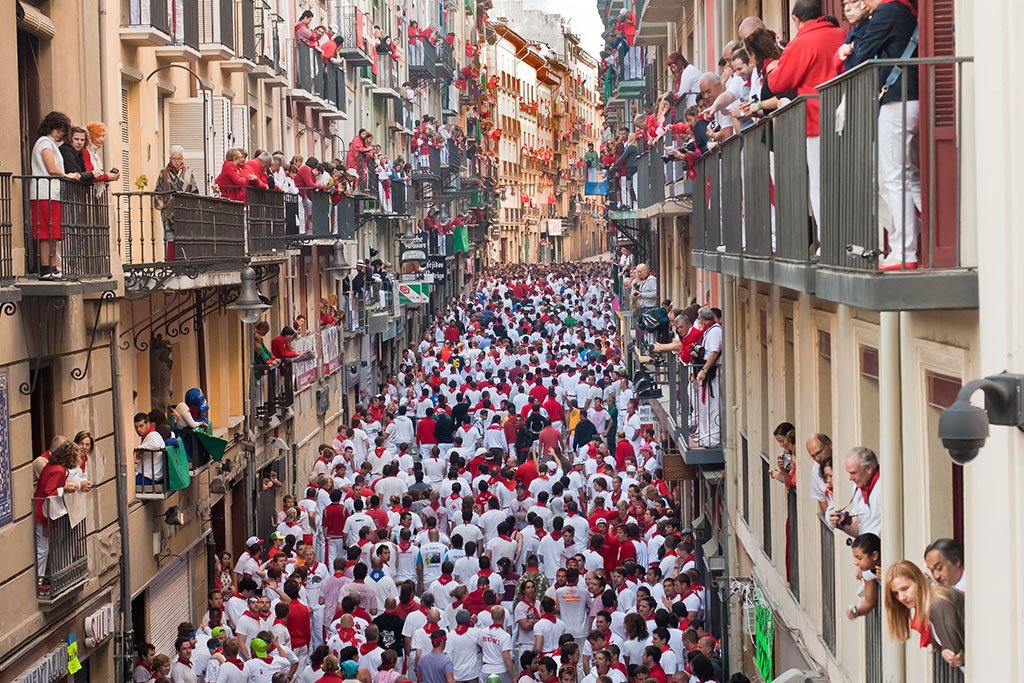Come with us to discover most famous routes in Spain and be amazed by their beauty and diversity. Spain is a country with an incomparably rich landscape and culture, home to some of the most famous routes in the world. From the historic trails of the Camino de Santiago to the picturesque Ruta del Cares in the Picos de Europa, these routes offer unique experiences for adventurers and nature lovers.
⌛ Visit the most iconic cities along these routes now
DareMapp makes it easy. Enjoy the COMPLETE GUIDE ON YOUR PHONE and experience every corner in a unique way — no schedules, just your own pace.
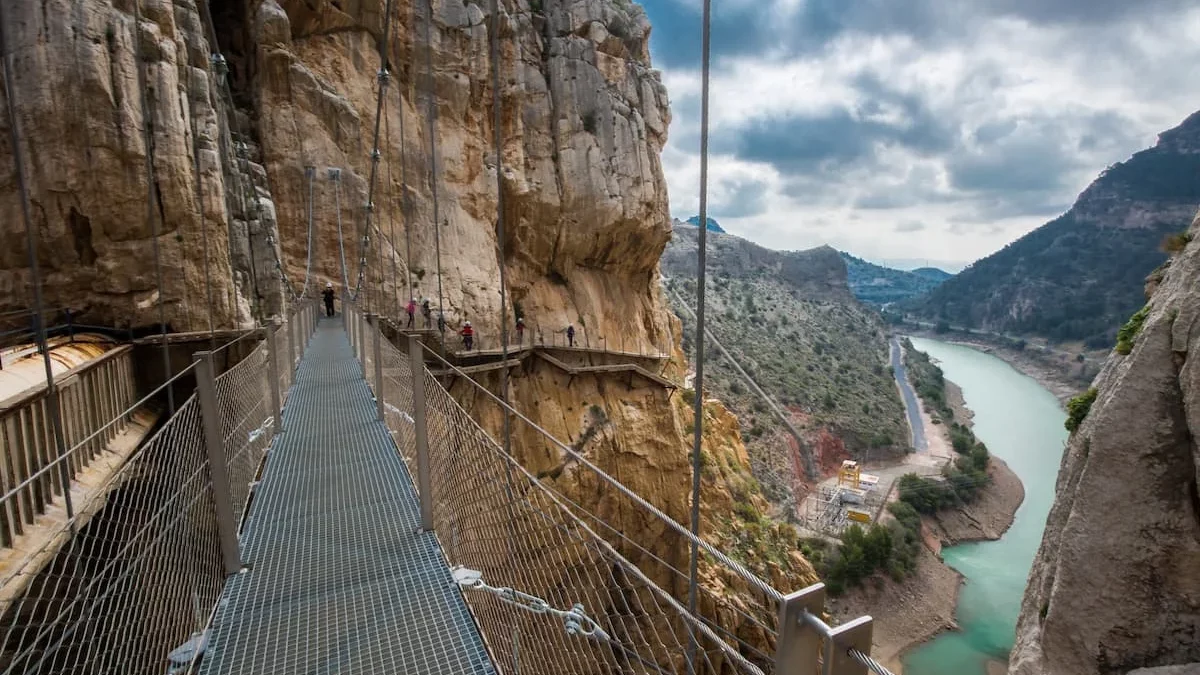
Most famous routes in Spain:
Cares Route (León – Asturias)
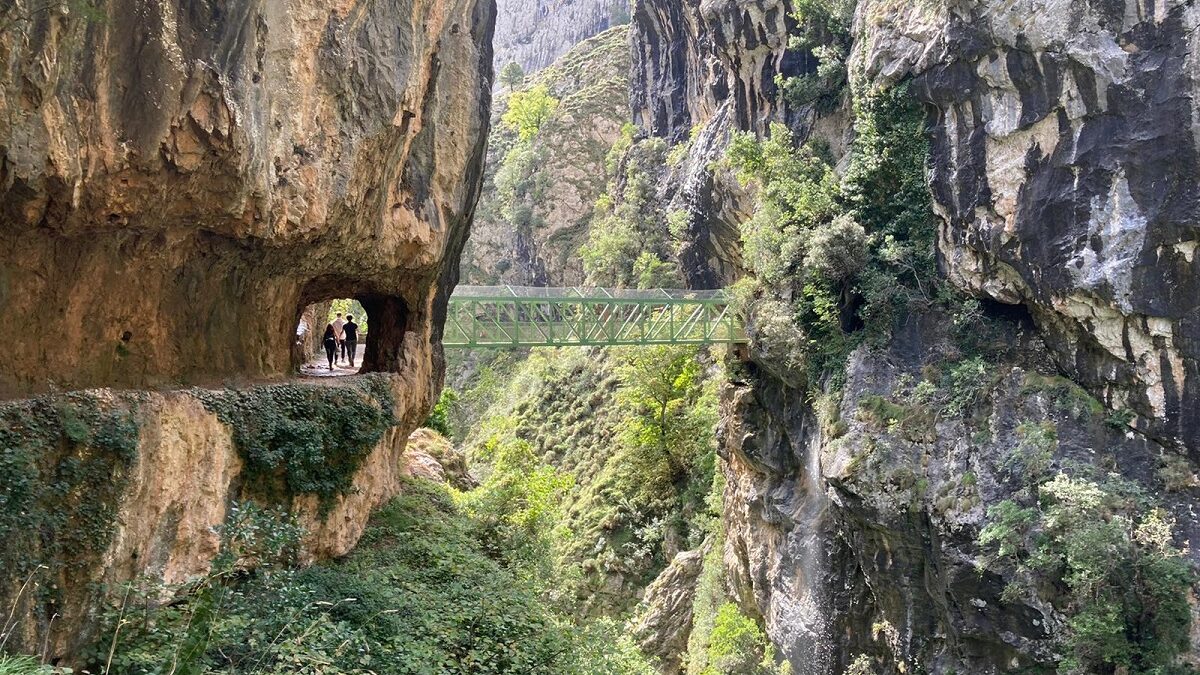
The Cares Route, known as the “Divine Gorge”, is one of the most famous routes in Spain. Located in the heart of the Picos de Europa, this spectacular 12-kilometre trail connects the villages of Caín in León and Poncebos in Asturias. The route, carved into the rock and bordered by impressive gorges and the Cares River, offers panoramic views and natural landscapes of breathtaking beauty. Ideal for hiking enthusiasts, the Cares Route is an unforgettable experience that combines challenge and dazzling nature.
💡 Here’s an idea. Make the most of your trip and discover the cities along the way with the DareMapp app.
KEEP THE CITY IN YOUR POCKET. Everything you need to explore is already on your phone — no groups, no schedules.
Caminito del Rey (Malaga)
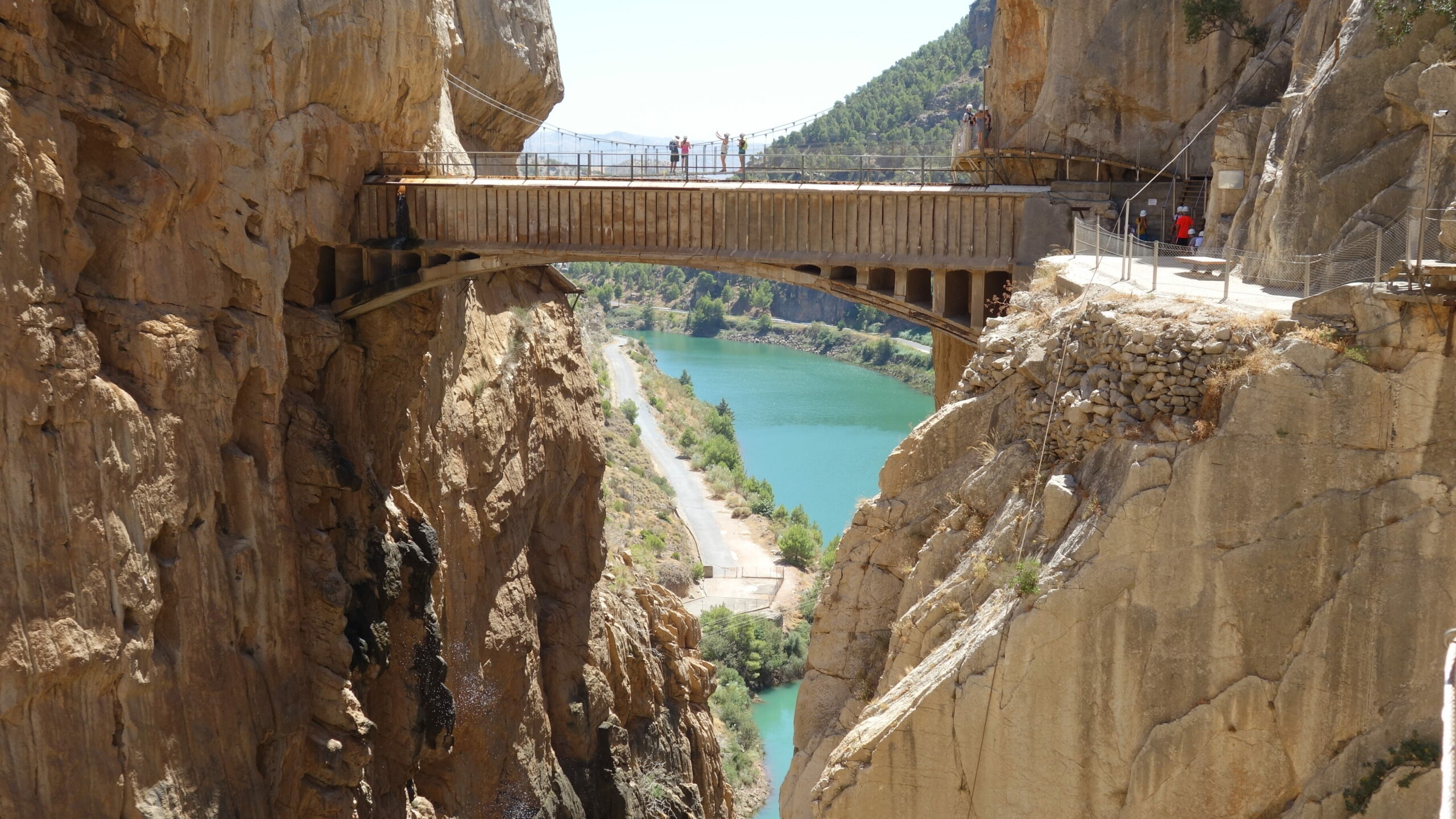
El Caminito del Rey, located in the province of Malaga, is one of the most famous routes in Spain. This vertiginous path, which stretches for 7.7 kilometres, winds through the Gaitanes Gorge, offering spectacular views from footbridges suspended more than 100 metres above the ground. Originally built in the early 20th century to facilitate the passage of workers at the Chorro dam, it has been restored and opened to the public as an exciting tourist route.
With its combination of history, adventure and breathtaking scenery, the Caminito del Rey is an experience like no other.
📲 Before you keep reading — will you be near Málaga?
DISCOVER EVERY CORNER AT YOUR OWN PACE with a complete guide on your phone.
Camí de Cavalls (Menorca)
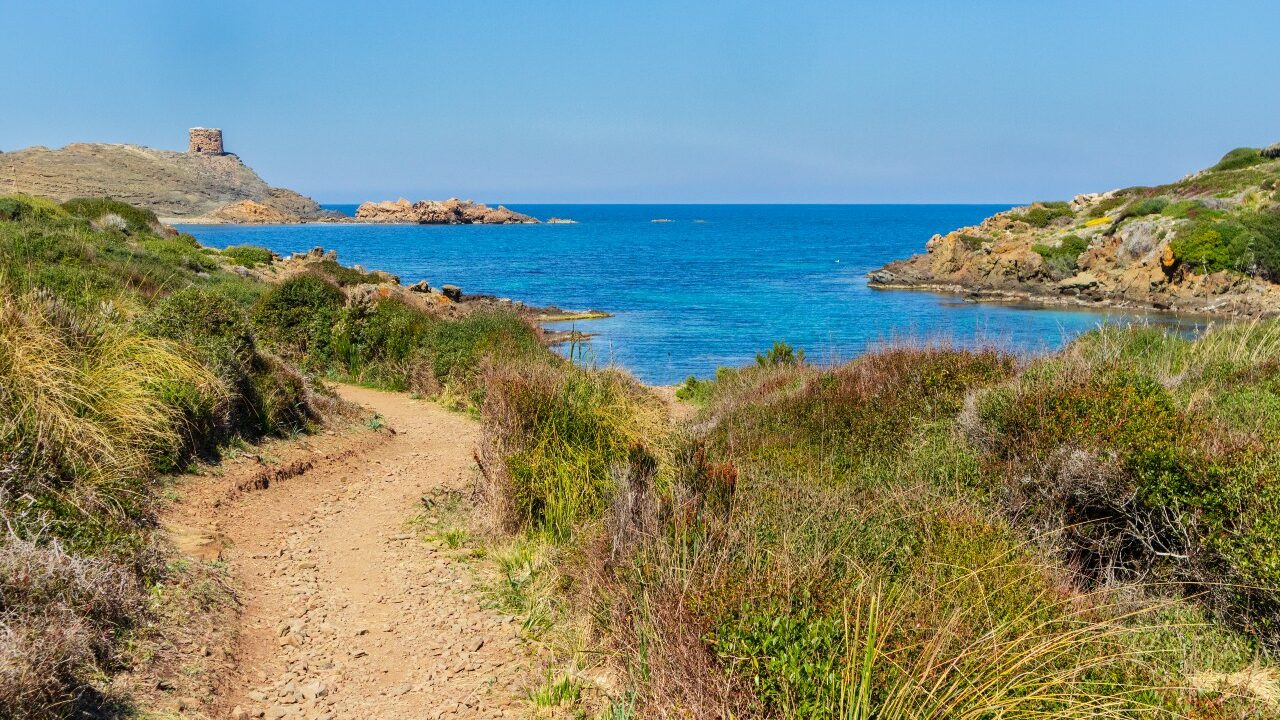
The Camí de Cavalls, on the island of Menorca, is one of the most famous routes in Spain. This ancient 185-kilometre trail circles the entire island, offering spectacular views of coves, cliffs and unique natural landscapes. Originating in the 14th century as a surveillance and defence route, today it is an ideal route for hikers and cyclists wishing to explore the diversity and beauty of Menorca. With its combination of history, nature and adventure, the Camí de Cavalls is a must-do experience for outdoor enthusiasts.
Hey, want to make the most of your route?
DISCOVER EVERY CORNER OF PALMA DE MALLORCA with a complete guide on your phone.
No schedules, no groups. Just you and the city.
The Camiño dos Faros (Galicia)
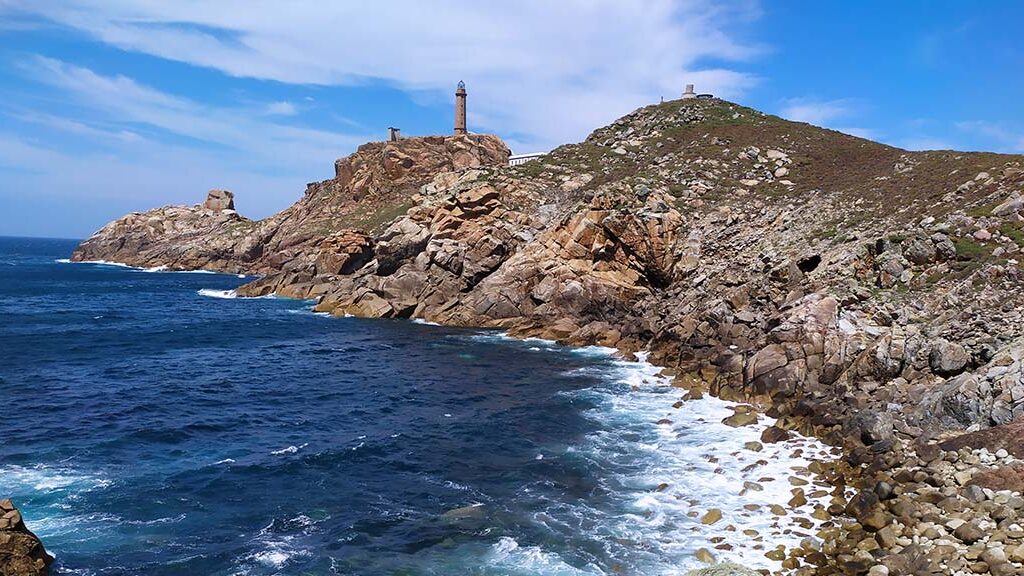
The Camiño dos Faros, located on the coast of Galicia, is one of the most famous routes in Spain. This 200-kilometre route, which runs from Malpica to Finisterre, follows the coastline known as the Costa da Morte, offering breathtaking views of the Atlantic, rugged cliffs and iconic lighthouses. Designed to connect hikers with the wild beauty and rich history of the region, this gem is considered one of Spain’s most famous routes, a real treasure for nature and hiking lovers.
Do you enjoy walking by Galicia’s lighthouses?
Then don’t miss the most legendary one: THE TOWER OF HERCULES IS WAITING FOR YOU IN A CORUÑA.
With DareMapp, explore it your way with a COMPLETE GUIDE TO A CORUÑA.
The Trans-Pyrenees (Catalonia, Aragon, Navarre and the Basque Country)
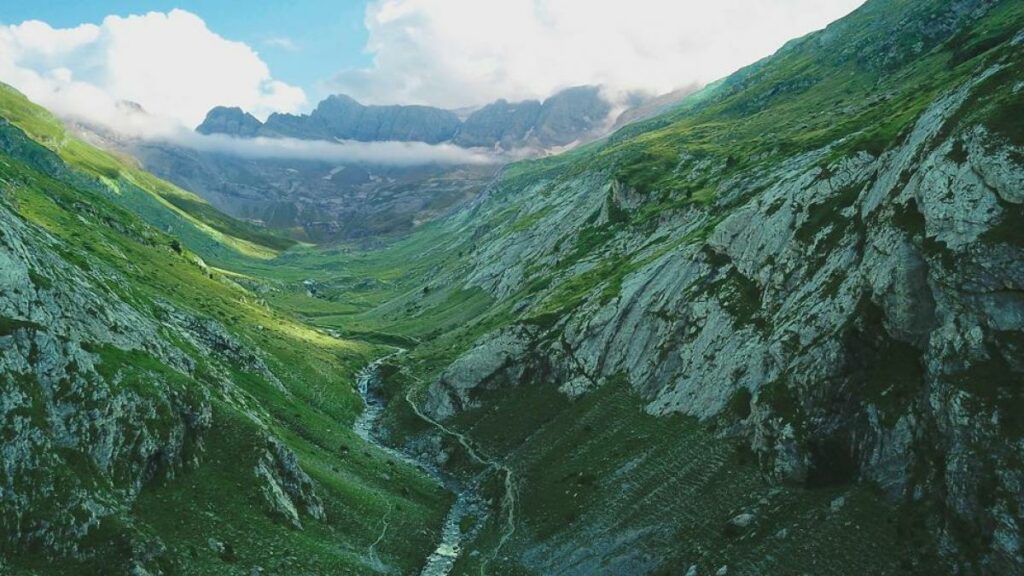
The Trans-Pyrenees route, which crosses the Pyrenees mountain range from the Cantabrian Sea to the Mediterranean, is one of the most famous routes in Spain. With more than 800 kilometres of trails and changing landscapes, this crossing offers an unrivalled experience for trekking and nature lovers. From high peaks to deep valleys, the Trans-Pyrenees Crossing captivates with its geographical and cultural diversity, making it an epic challenge for adventurers wishing to explore the wild beauty of the Iberian Peninsula.
If you’re taking on the Transpirenaica, DON’T MISS what’s between each stage.
Explore the cities along the route with DareMapp on your phone.
Even better than a free tour — ALL the information right in your pocket.
Path of the Hunters (Ordesa and Monte Perdido National Park, Huesca)

The Senda de los Cazadores, located in the province of Huesca, is one of the most famous routes in Spainy. This mountain trail, which stretches for 7 kilometres in the Ordesa y Monte Perdido National Park, offers a unique experience among pine forests and spectacular views of waterfalls and cliffs. With its combination of natural beauty and technical challenges, the Senda de los Cazadores attracts hikers and nature lovers from all over the world, establishing itself as one of the most famous routes in Spain.
Carros de Foc (Aigüestortes National Park, Lleida)
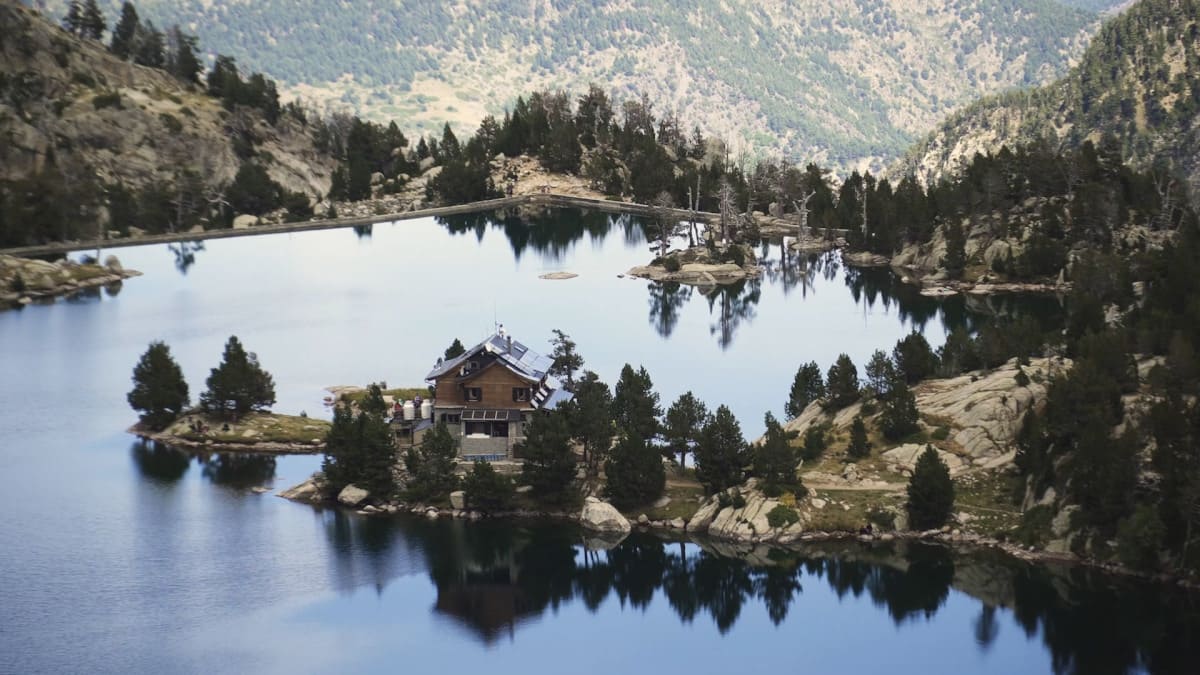
The Carros de Foc route, in the Aigüestortes i Estany de Sant Maurici National Park in the Catalan Pyrenees, is one of the most famous routes in Spain. This circular route of approximately 55 kilometres, which connects nine mountain refuges, offers hikers the opportunity to immerse themselves in the breathtaking nature of the Pyrenees. With spectacular mountain scenery, crystal-clear lakes and towering peaks, the Carros de Foc Route attracts adventurers from far and wide, establishing itself as one of the most memorable experiences for hiking enthusiasts in Spain.
🤔 Plans after trekking?
From the heights of Aigüestortes to the streets of Barcelona, keep exploring with the MOBILE GUIDED TOURS app.
Route of Charles V (Cáceres)
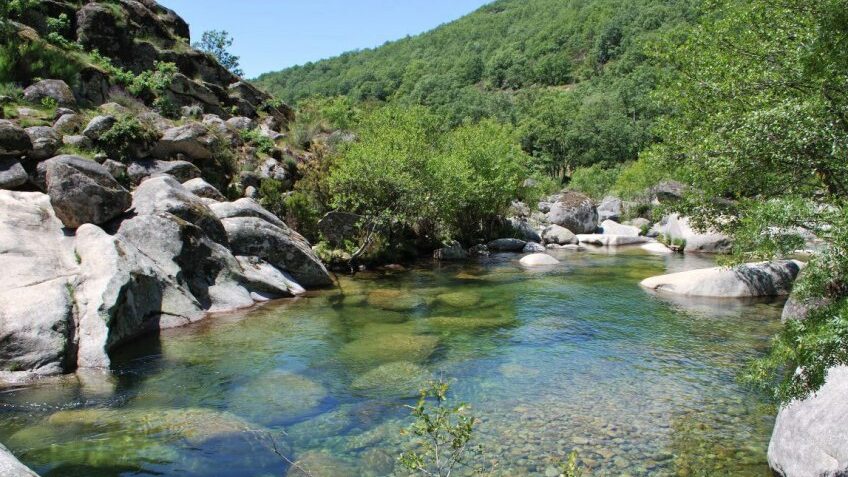
The Route of Charles V, also known as the Silver Route, is a historical journey that follows the footsteps of Emperor Charles V through Spain, from the Monastery of Yuste in Extremadura to the Royal Monastery of San Lorenzo de El Escorial in Madrid. Following ancient Roman and medieval paths, this route offers travellers the opportunity to discover Spain’s rich history and stunning architecture. Known as one of the country’s most famous routes, the Route of Charles V is an unforgettable experience for lovers of history and adventure.
Cachorros de Monachil (Sierra Nevada)
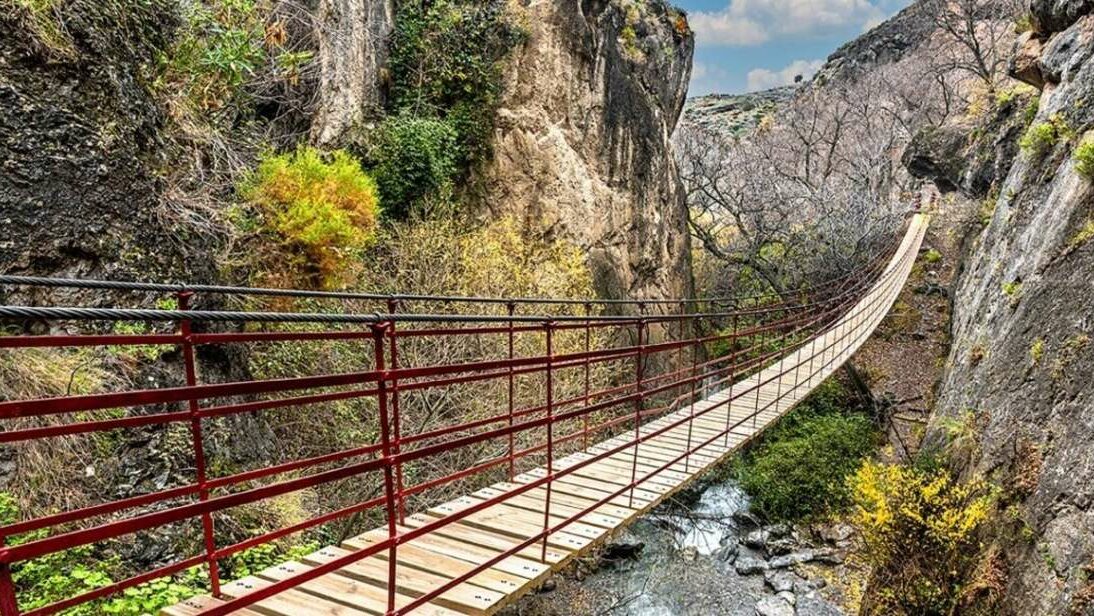
Located in the province of Granada, the Ruta de los Cahorros de Monachil is one of the most exciting and popular trails in Spain. This spectacular trail winds through the gorge of the Monachil River, offering hikers the opportunity to walk over hanging footbridges and through tunnels carved into the rock. With its breathtaking panoramic views, waterfalls and natural landscapes, the Ruta de los Cahorros de Monachil attracts adventurers and nature lovers from all over the world, establishing itself as one of the most famous routes in Spain.
Peñalara (Sierra de Guadarrama, Madrid)
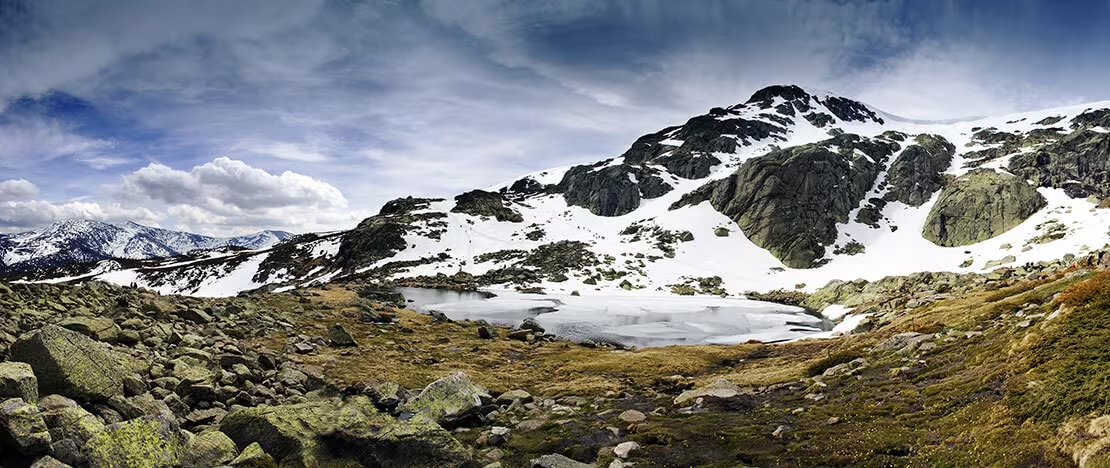
The Peñalara Route, in the Sierra de Guadarrama, is one of the most emblematic and challenging hikes in Spain. This mountain trail, which culminates at the highest peak in the sierra, offers hikers the opportunity to explore pine forests, high mountain lakes and spectacular alpine landscapes. With its combination of natural beauty and technical challenges, the Peñalara Route attracts mountaineers and hiking enthusiasts from all over the country, establishing itself as one of the most famous routes in Spain.
After breathing in the fresh mountain air?
Head to the city and DISCOVER MADRID AT YOUR OWN PACE. No schedules, no groups — everything right on your phone.
Saliencia Lakes Route (Somiedo, Asturias)
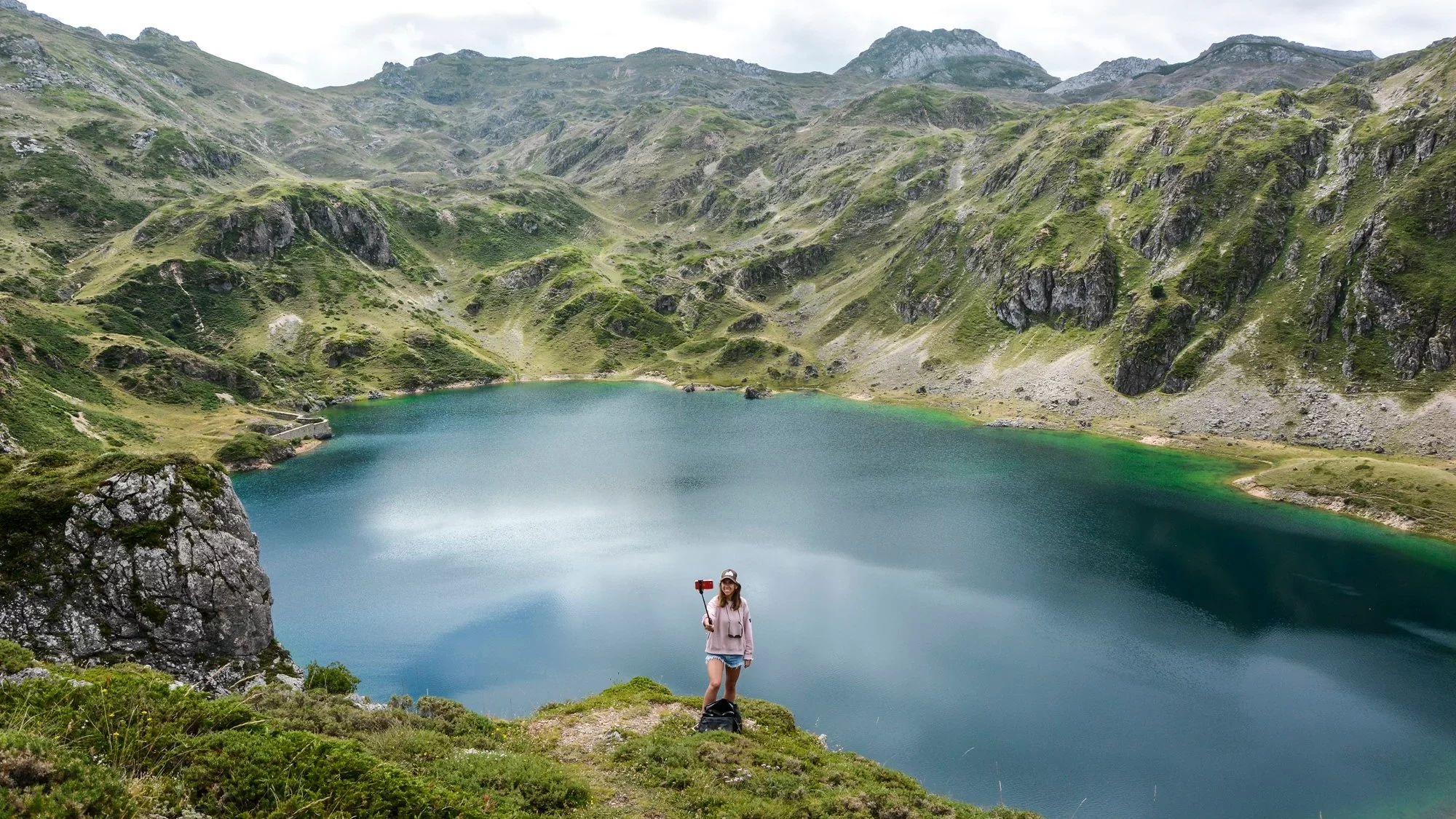
The Saliencia Lakes Route, located in the Somiedo Nature Reserve in Asturias, is one of the most famous routes in Spain. This mountain trail winds through glacial valleys, alpine meadows and crystal-clear lakes, offering hikers the opportunity to immerse themselves in the wild beauty of the Picos de Europa. With its combination of spectacular scenery and unique biodiversity, the Saliencia Lakes Route captivates nature lovers and hikers. Considered one of the most famous routes in Spain, it is a hidden gem in the north of the country.
The Vero Footbridges (Huesca)
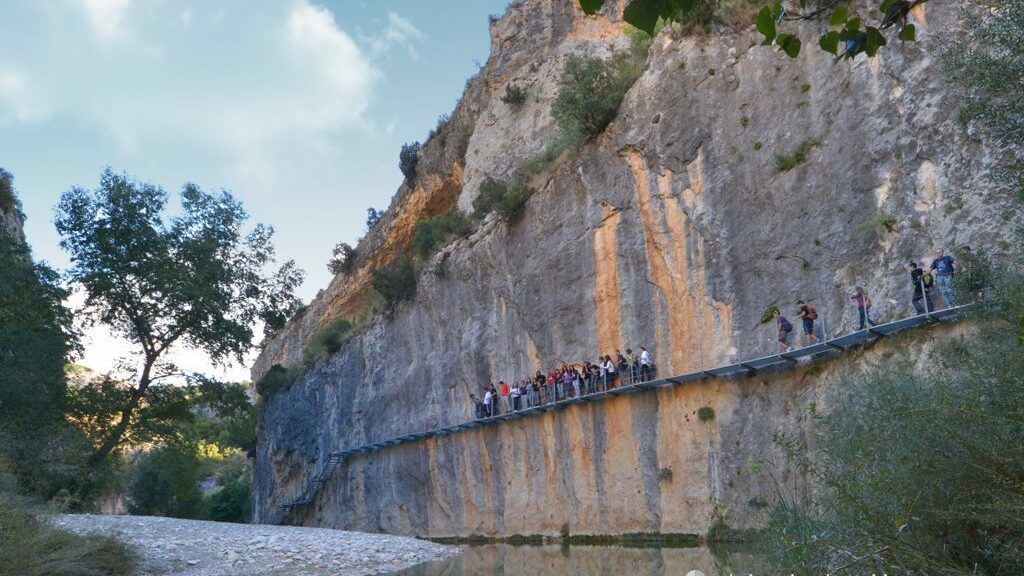
The Vero Footbridges Route, in the Somontano de Barbastro region of Huesca, is one of the most exciting and unique hiking experiences in Spain. This route meanders along the canyon of the Vero River, offering hikers the opportunity to walk on footbridges suspended over vertiginous cliffs and through tunnels carved into the rock. With its breathtaking panoramic views, rock formations and the rich history of the area, the Ruta de Pasarelas del Vero attracts adventurers and nature lovers from all over the world, establishing itself as one of the most famous routes in Spain.
Mount Gorbea (Basque Country)
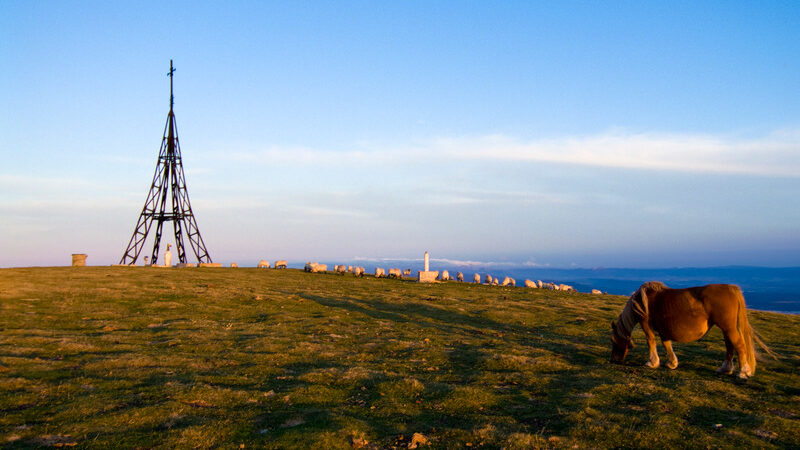
The Monte Gorbea Route, in the province of Álava and Vizcaya in the Basque Country, is a must-see destination for hiking and nature lovers in Spain. This iconic peak, which reaches a height of 1,481 metres, offers hikers an unrivalled experience with panoramic views of the Basque mountains and their green valleys. With its diversity of flora and fauna, as well as its cultural and religious importance, the Monte Gorbea Route attracts visitors from far and wide and has established itself as one of the most famous routes in Spain.
⚖️ Life is all about balance. If you’ve enjoyed the mountains, now it’s time to discover the city.
Irati Forest (Navarre)
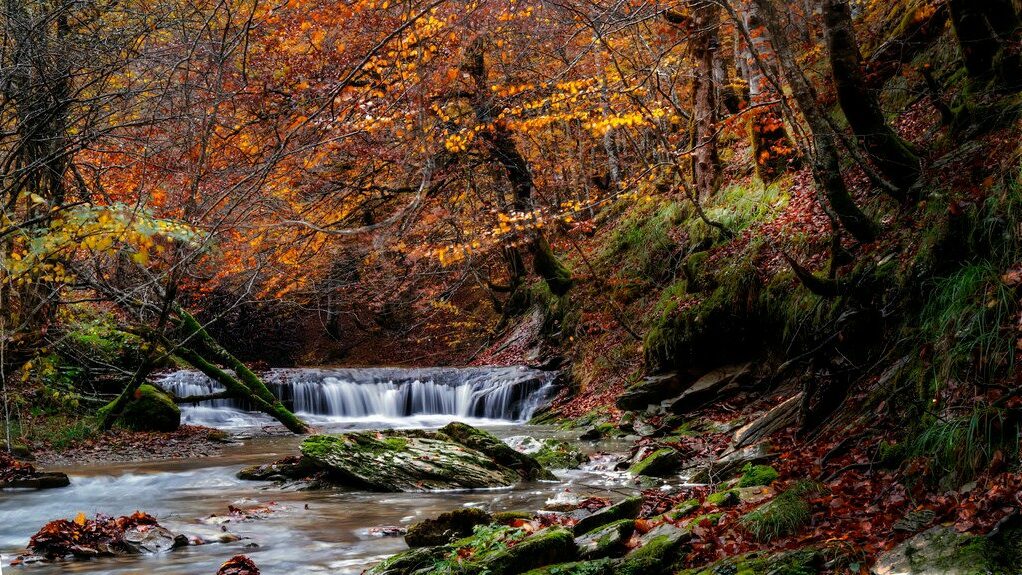
The Irati Forest Route, in the Navarrese Pyrenees, is considered one of the most famous routes in Spain. This extensive forest of beech and fir trees, considered one of the largest and best preserved in Europe, offers visitors the opportunity to immerse themselves in an environment of unspoilt nature and dreamlike landscapes. With its serene paths, crystalline rivers and picturesque lakes, the Irati Forest Route captivates nature lovers and hikers, consolidating itself as one of the most emblematic and appreciated destinations in the country.
The Way of St. James
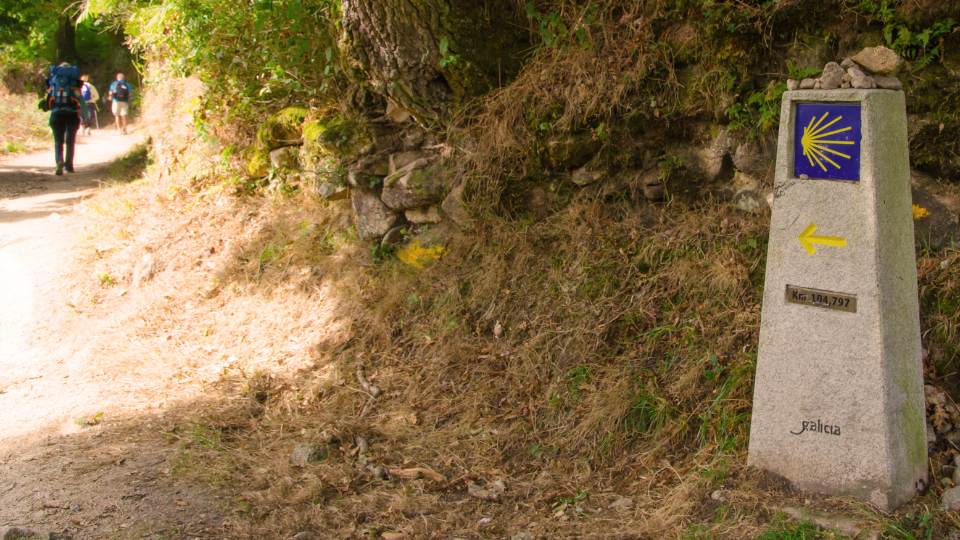
The Way of St. James is a network of pilgrimage routes that converge in the city of Santiago de Compostela, in Galicia, northwest Spain. This ancient trail, which dates back to the 9th century, runs through various regions of Spain and Europe, passing through varied landscapes, historic villages and places of great religious and cultural significance. With millions of pilgrims walking it every year, the Camino de Santiago is one of the most famous routes in Spain, offering travellers a unique experience of personal encounter, spirituality and connection with history and nature.
❕❔Did you know that over 400,000 people reach Santiago every year after completing the Camino?
Make your arrival count too.
Tips to prepare before walking Spain’s most famous routes
When you decide to venture out on the most famous routes in Spain, it is crucial that you prepare yourself properly to enjoy the experience to the full. Here are some essential tips on how to prepare, what equipment to take and what to do in case of emergency, as well as suggestions for activities you can do along the way.
Pre-preparation
Before setting off on your adventure along the most famous routes in Spain, it is essential to find out how difficult the route will be and the expected weather conditions. Plan ahead and study the route well, marking key points such as refuges, water sources and possible emergency exits. Don’t forget to notify someone you trust about your plans, especially if you’re walking a solo route.
Essential equipment
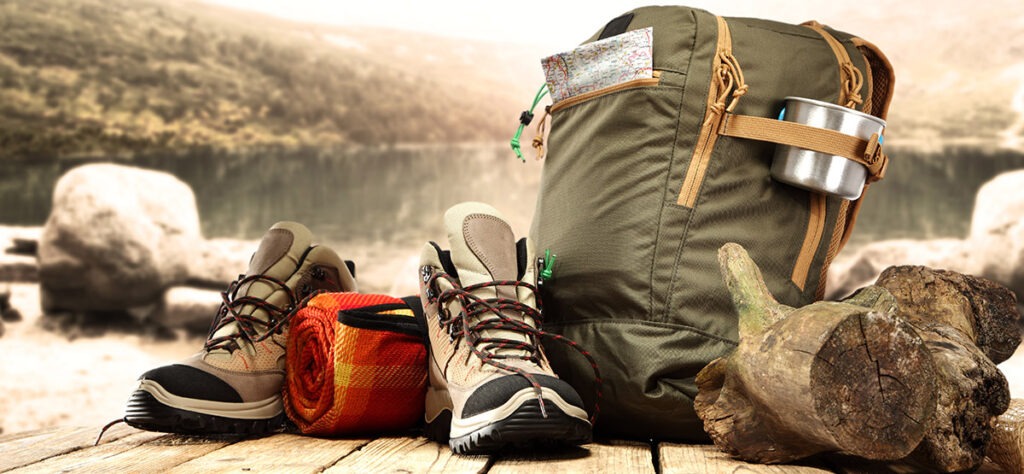
The equipment you carry can make the difference between an enjoyable experience and a difficult day. Here’s a basic checklist of what you can’t go without in your backpack:
- Clothing: Opt for technical clothing that is lightweight and breathable, but also protects you from the cold and rain. It is advisable to dress in layers to adapt to temperature changes.
- Appropriate footwear: Trekking boots are essential for walking in the most famous routes in Spain. Make sure they are comfortable, waterproof and have a good grip.
- Water and food: Take enough water to keep you hydrated throughout the route, as well as energy snacks such as nuts, cereal bars or dried fruit.
- Map and compass/GPS: Although many routes are well signposted, it is essential to carry a map and an orienteering device in case you get lost.
- First aid kit: Include basic supplies such as bandages, antiseptics, painkillers and plasters. It is also useful to carry a thermal blanket and a utility knife. You can never take enough precautions when visiting the most famous routes in Spain.
- Head torch: If the route takes longer than planned, a head torch will allow you to continue safely after dark. A good gadget for travelling along the most famous routes in Spain
What to do in an emergency?
Although it is not common, you may encounter unforeseen situations on the most famous routes in Spain. If you find yourself in an emergency, follow these steps:
- Stay calm: The most important thing is not to panic. Assess the situation and, if necessary, find a safe place.
- Use your equipment: If you have a communication device, such as a mobile phone or GPS locator, use it to call for help. In areas without coverage, try to locate a high point to improve the signal. This will be very useful if you are planning to visit some of the most famous routes in Spain.
- Signal your location: If you need to be rescued, use items such as a torch, mirrors or whistles to attract the attention of rescue teams.
- Protect yourself from the weather: If you can’t move, seek shelter from inclement weather. The thermal blanket in your first aid kit can be vital in these cases.
¿Want more tips like these, tailored to every city on your route?
DareMapp makes it easy 📲: local recommendations 📍, interactive maps 🗺️, self-guided tours 🚶, and travel tips ✈️ — all on your phone.
Activities on the routes
Spain’s most famous routes offer more than just hiking; you can also enjoy other activities to enrich the experience:
- Nature photography: Spain has an incredible biodiversity. Take your camera or smartphone and capture the beauty of your surroundings.
- Birdwatching: On many of these routes, such as in the Doñana National Park or the Picos de Europa, you’ll be able to spot unique species of birds.
- Relaxation and meditation: Take advantage of the quiet moments to disconnect, meditate and enjoy the natural environment.
- Picnic at scenic spots: Take a blanket and enjoy a picnic with spectacular views, an experience you won’t forget.
Hiking Spain’s most famous routes can be an unforgettable experience if you prepare properly and follow these tips. Equipping yourself well, knowing how to act in case of emergency and making the most of the activities on offer on each route will allow you to enjoy nature in a safe and pleasant way.
🧐 Still here? Are you sure you’d rather keep reading the blog instead of having all this and much more, tailored for every city?
🗺️ Discover the cities along Spain’s most iconic routes
📍Over 30 Spanish cities
🚀A planned route to make the most of your time
💡Recommendations, excursions & unique experiences
❓Quizzes, tests, and narrated content

Spain’s most famous routes offer a unique combination of natural landscapes and cultural richness that attracts adventurers from all over the world. From the historic crossing of the Camino de Santiago to the breathtaking Ruta del Cares, each of these routes provides an unforgettable experience, whether it’s for its challenging trails, panoramic views or the opportunity to connect with nature.
Being properly prepared, with the necessary equipment and knowledge of how to act in case of emergency, is crucial to make the most of these routes. In addition, complementing the route with activities such as photography, bird-watching or simply enjoying a picnic in spectacular surroundings can transform your experience into an even more memorable adventure. Spain’s most famous routes not only connect you with nature, but also allow you to explore the country’s history and culture in its purest form.
Remember that with DareMapp you can take a multitude of guided tours in an interactive way.
What better way than travelling and discovering while learning in a fun way?


